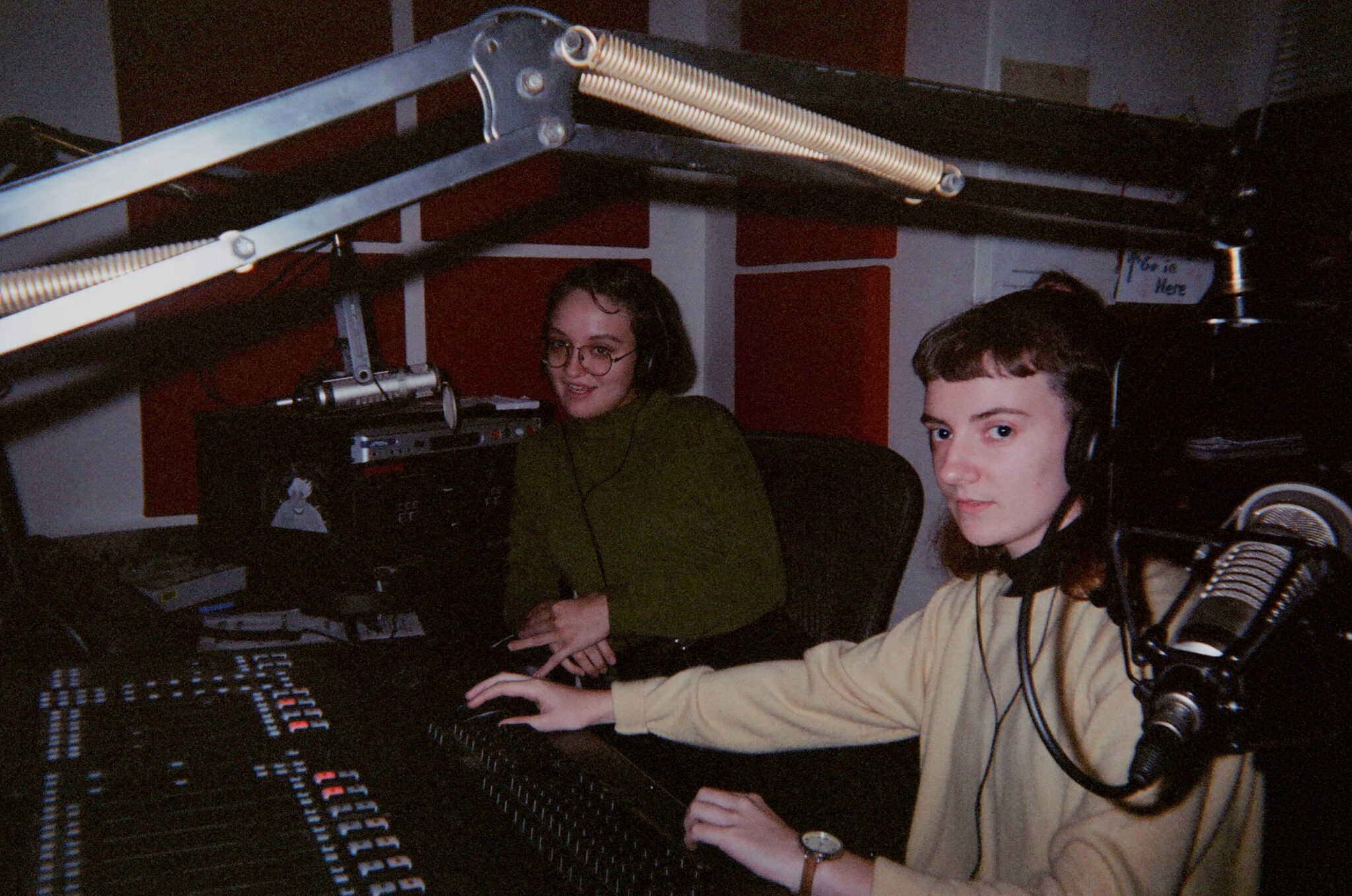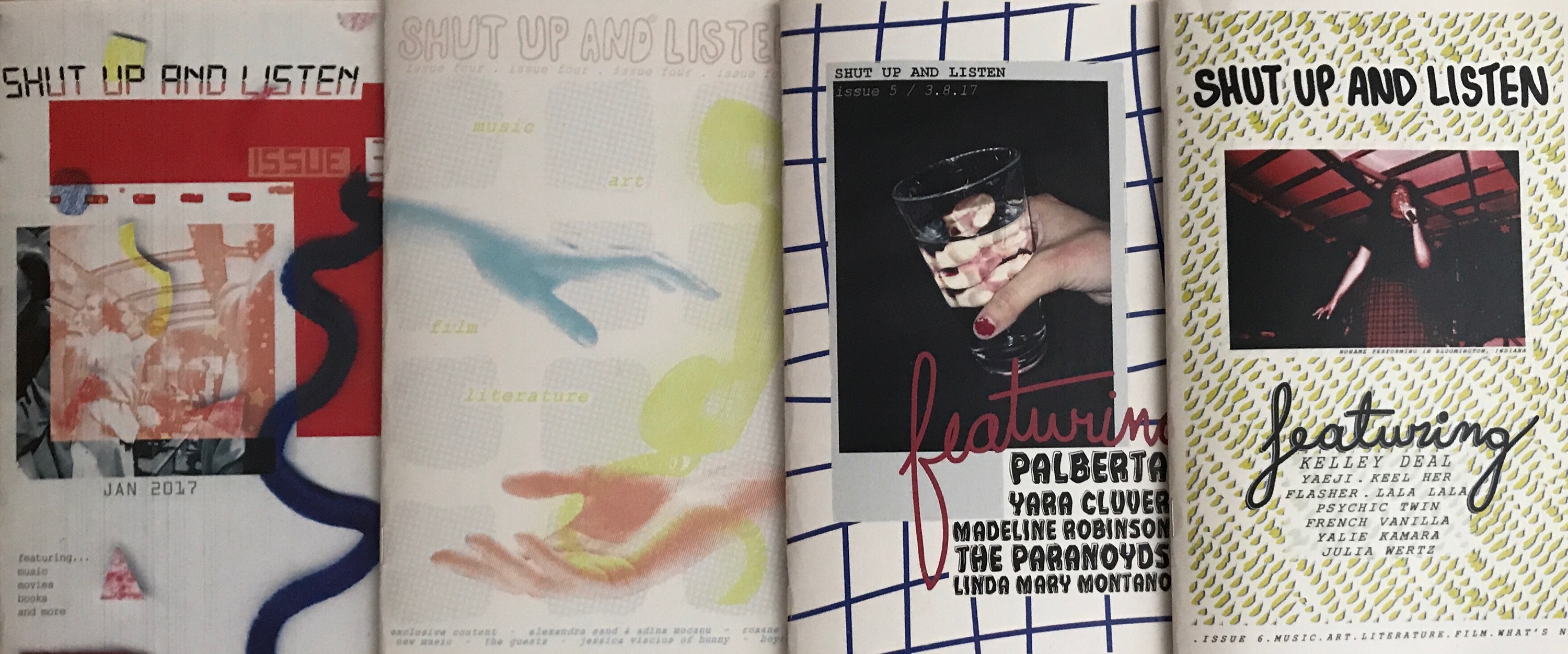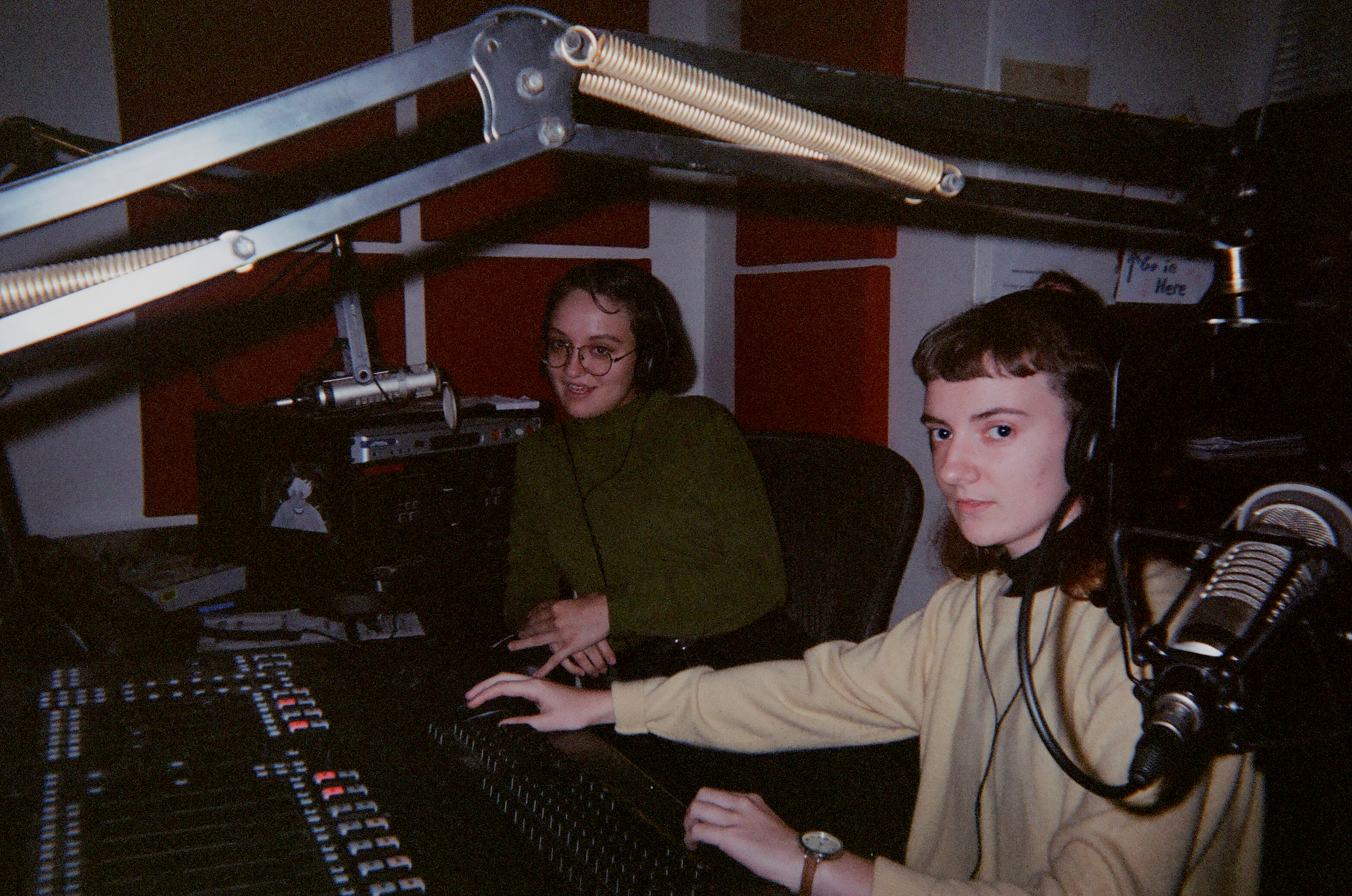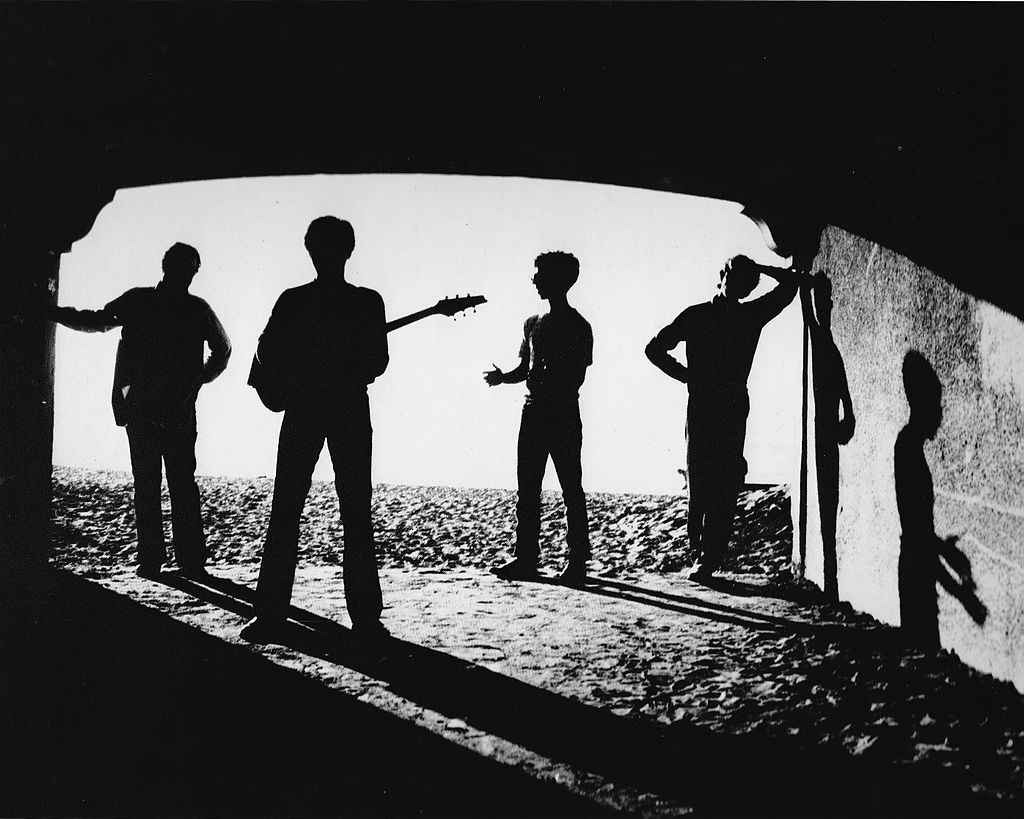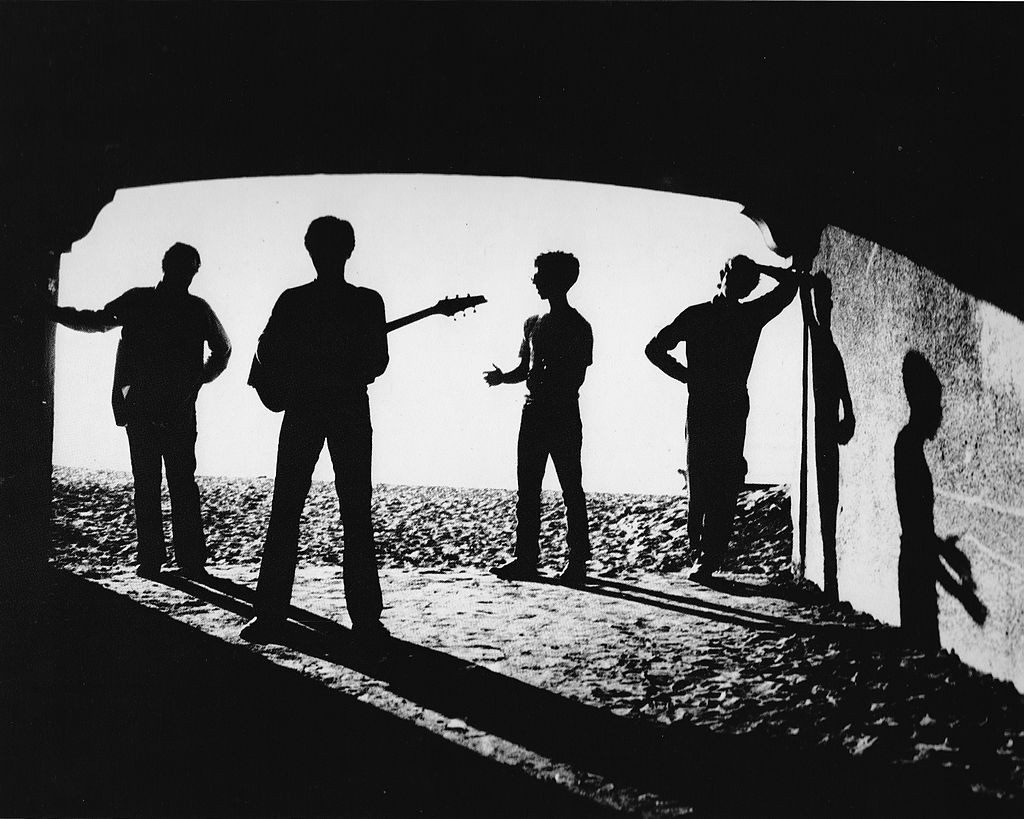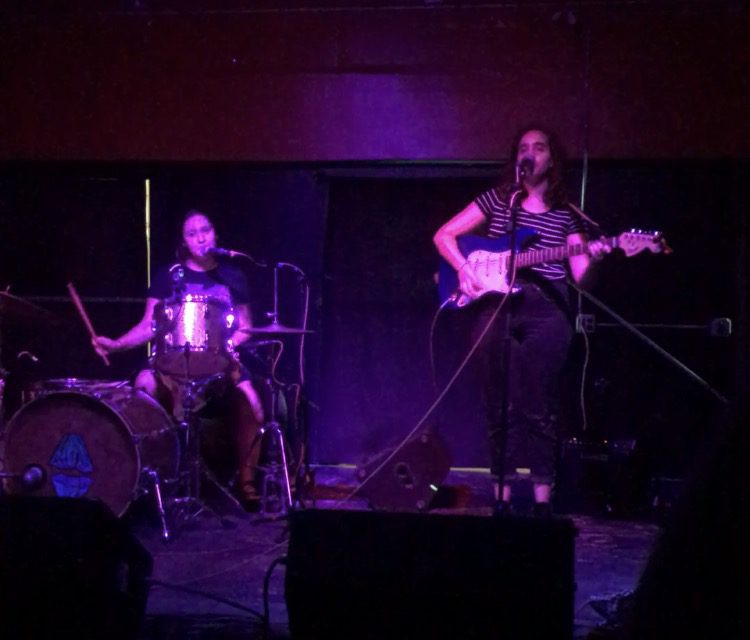
Jess Mann and Emma Johnson of Fresh Kill, one of the newest bands to appear on the local scene, began writing songs together almost immediately after Emma started taking drum lessons back in February. In the notably short span of time that has since passed, the two have been busy writing and recording songs, releasing an EP, and playing a string of shows around town. Still, the momentum that Fresh Kill has created over the summer is just ramping up as new music, more shows, and perhaps even a regional tour are on the horizon for this duo. Last week, I sat down with Jess and Emma over cocktails. As we chatted, I learned about their collaborative process, the underlying political motivations of their work, and their hopes to contribute positive changes to the Bloomington music scene and community.
As Fresh Kill is still in its early stages, Emma and Jess hesitate to place their music in any one specific genre. Sometimes it’s hard, sometimes it’s soft, but it always features tight vocal harmonies and poignant lyrics of a vaguely autobiographical sentiment. Beyond these trademark qualities, the two prefer to grow organically as songwriters. Rather than tethering themselves to any one style, Jess and Emma seek the freedom and space to move in whatever directions seem natural. During our chat, Emma reflected on her intent to expand the boundaries of Fresh Kill’s sound as they evolve. “We’re still in such an early stage. We’re still figuring that out and I imagine that the stuff we continue to write is going to change and grow. I’m personally interested in the drums, learning a bunch of different genres and then bringing that into whatever we create.” Jess concurred and added, “Let us have an album first.”
Jess and Emma’s songwriting process is a collaborative one where each provides strengths that contribute to the final product. Emma writes the lyrics, but often enlists the help of Jess with the wording. Their compositions are also the result of a team effort. While their songwriting methods are fluid and varied, Emma generally provides the overall skeleton of a song or idea and Jess fills it in with guitar chords and an arrangement.
As soon as the two have finalized a new song, they waste no time recording it. While Jess originally went to school for audio engineering, she prefers a quick and dirty method of recording and mixing. She explained, “I don’t want to sit on it. Recording can be such a complex and lengthy process; let’s make it as quick and painless as possible.” Emma added, “That’s definitely what we do with our demos. I think maybe in the span of four hours, we recorded all of them. We even took a lunch break. I think they went online that night. I’m always really impatient and as soon as we do something that I’m excited about, I need to share it immediately!”
As our conversation shifted, we began to discuss the Bloomington music scene, and the two explained what they perceive to be its strengths and weaknesses. While Jess and Emma both acknowledged that they feel a great deal of support from many of the individuals who make up Bloomington’s tight-knit scene, it can often feel like a boy’s club, specifically a white boy’s club. Jess remarked, “There are always exceptions, but it’s still a boys club. I mean there are some really rad women, femme, and queer people playing music but most of the people playing music are white dudes. Some of them are cool and conscious of their positions, but a lot of them don’t see the point in actively including people who aren’t like them.” Emma pointed out that in Bloomington, it is still usually considered a novelty to have a show where white men are represented as the minority. “It’s not that there aren’t rad femme folks, queer folks, or nonbinary people making music, it’s that when it does happen it’s exceptional in some way. It’s very rare that there is a show that’s majority of those people playing where it’s not really intentionally curated to be that way.”
According to Emma and Jess, a true push toward making the local scene more inclusive involves both explicitly curating shows and other spaces that feature underrepresented musicians and also normalizing inclusivity at all shows. Jess and Emma are using their positions in the local scene to do just that. Jess was previously part of Missfits, a music collective for women and other gender minorities. Missfits, which ran for about a year and a half, had its final event last summer.
Fortunately, one year later, it seems that similarly motivated projects have risen in its wake and are shaking up the local scene. Both Emma and Jess are fans of Shut Up and Listen, a serial zine created by Jesse Grubb and Bethany Lumsdaine that provides a platform for underrepresented musicians. Jess contemplated the impact of these projects. “Sometimes you have to make a point and be really intentionally clear about why you’re pointing out the music that is made by the people who aren’t dudes, and maybe things have changed a little bit or maybe I just have a different perspective, but it’s cool to be at a point where you can write a zine about underrepresented musicians in Bloomington and not really have to make a big point out of that fact.” According to Emma, the two have a similar perspective when it comes to planning Fresh Kill shows. While Fresh Kill may not have explicitly political lyrics, the political identities of both Emma and Jess motivate all of their creative projects.
When they aren’t working on Fresh Kill, Jess and Emma, who are recent graduates at Indiana University, are busy with other jobs and creative projects. Jess works at Landlocked Music, one of Bloomington’s local record stores, and participates in several activist organizations. Emma co-produces and co-hosts Kite Line, a weekly radio program and podcast about prison issues, which she explained is an “attempt to create a platform and bridge for communication and dialogue with folks who are incarcerated or their families and people who have been affected by the prison industrial system to share their stories and break down certain stigmas.”
When asked about new music, Jess and Emma excitedly assured me that they are writing and recording for a fall release. Although they didn’t divulge too much information about what that would entail, they told me to expect greatness and I’m inclined to believe them.
Check out Fresh Kill’s acoustic set at Boxcar Books in Bloomington TONIGHT (August 15th) for a benefit show for the Charlottesville Anti-Racist Medical Fund.


